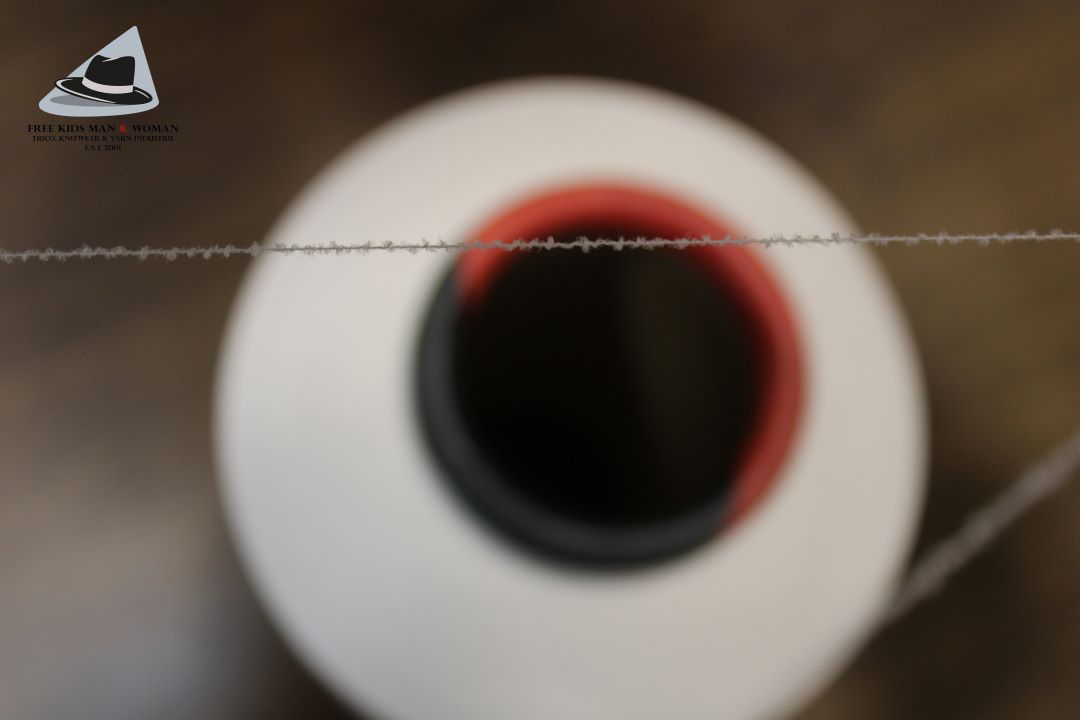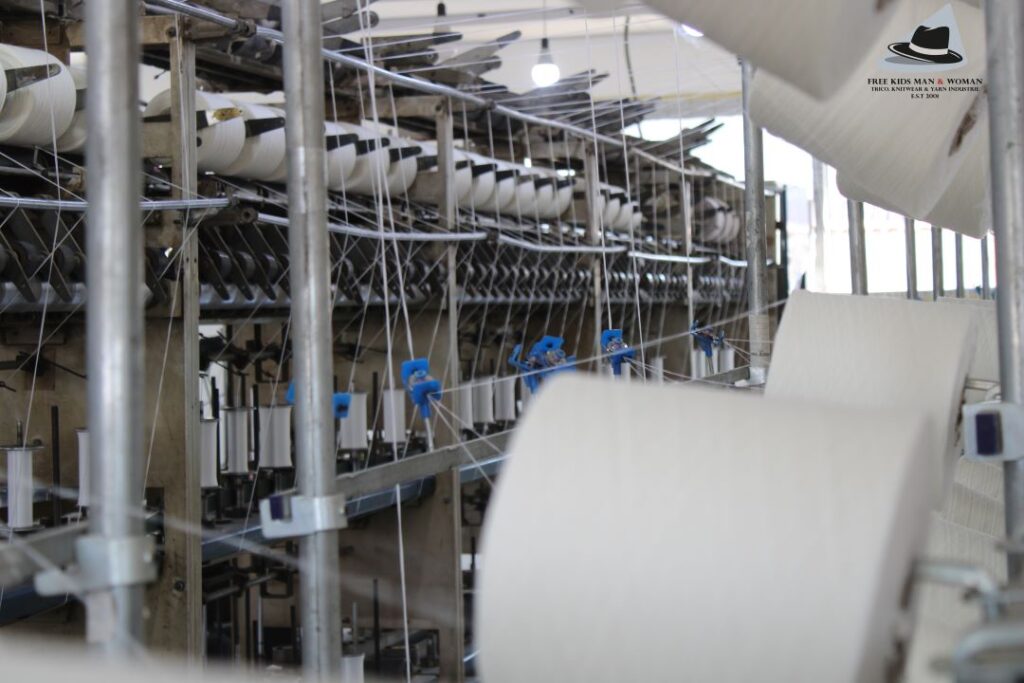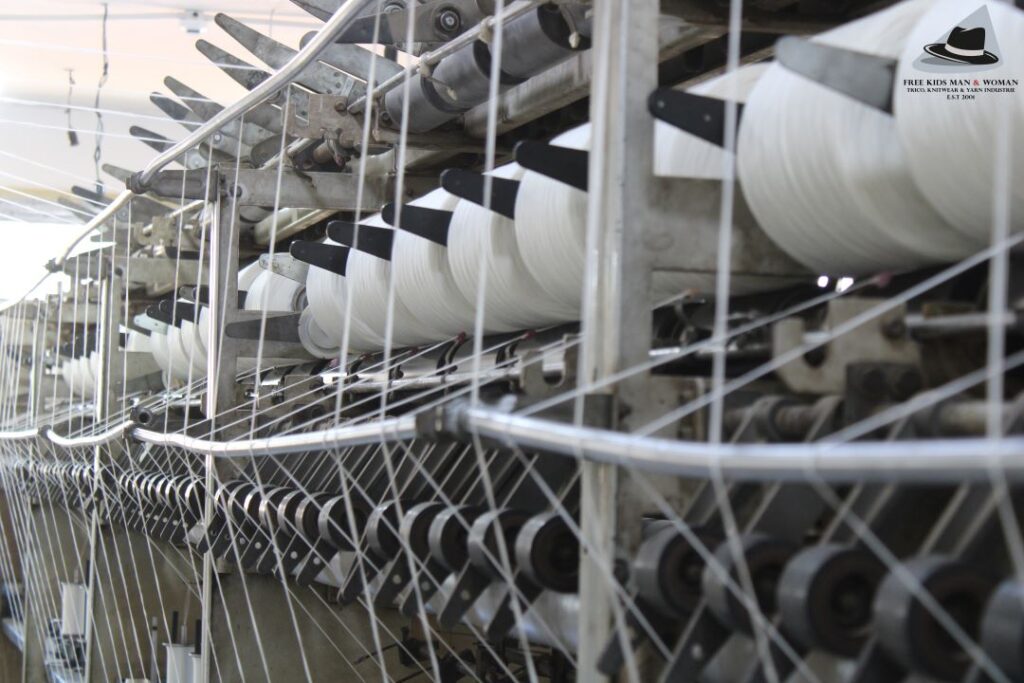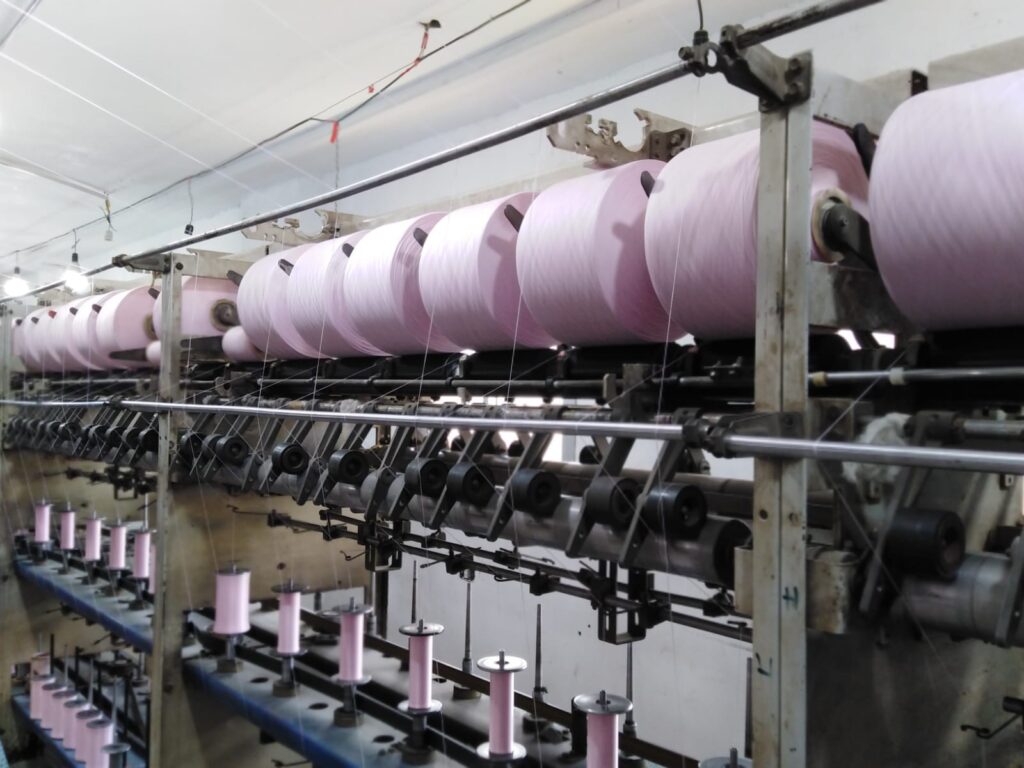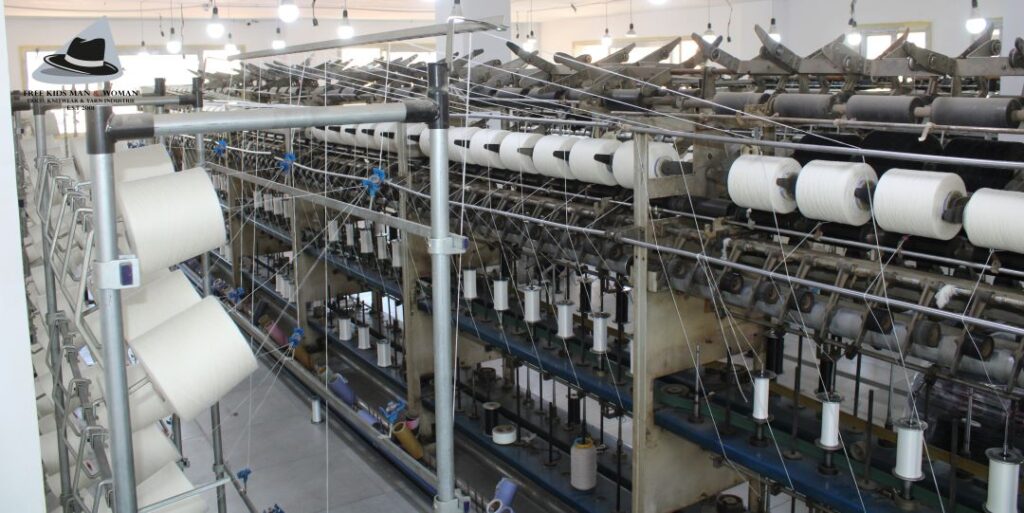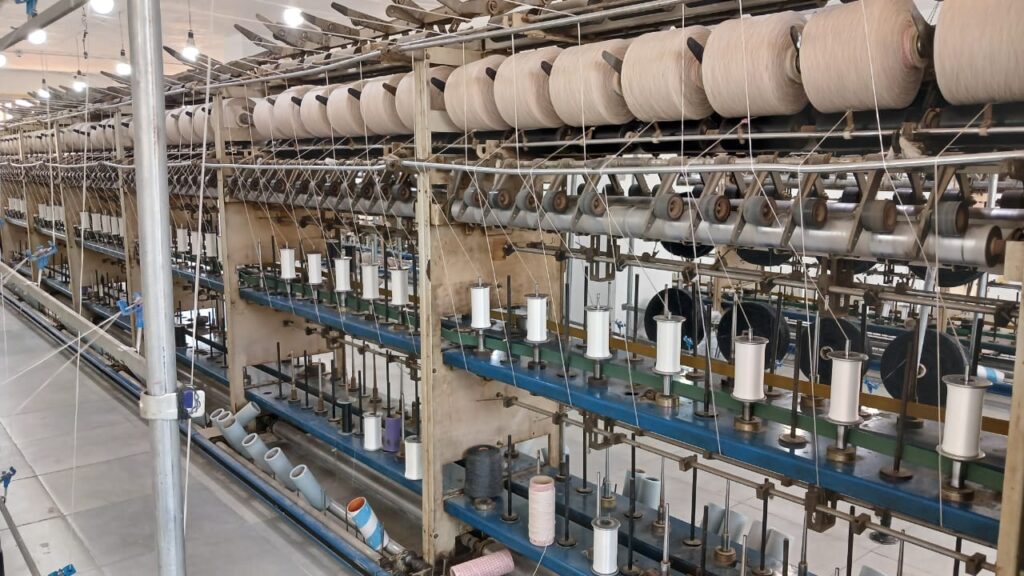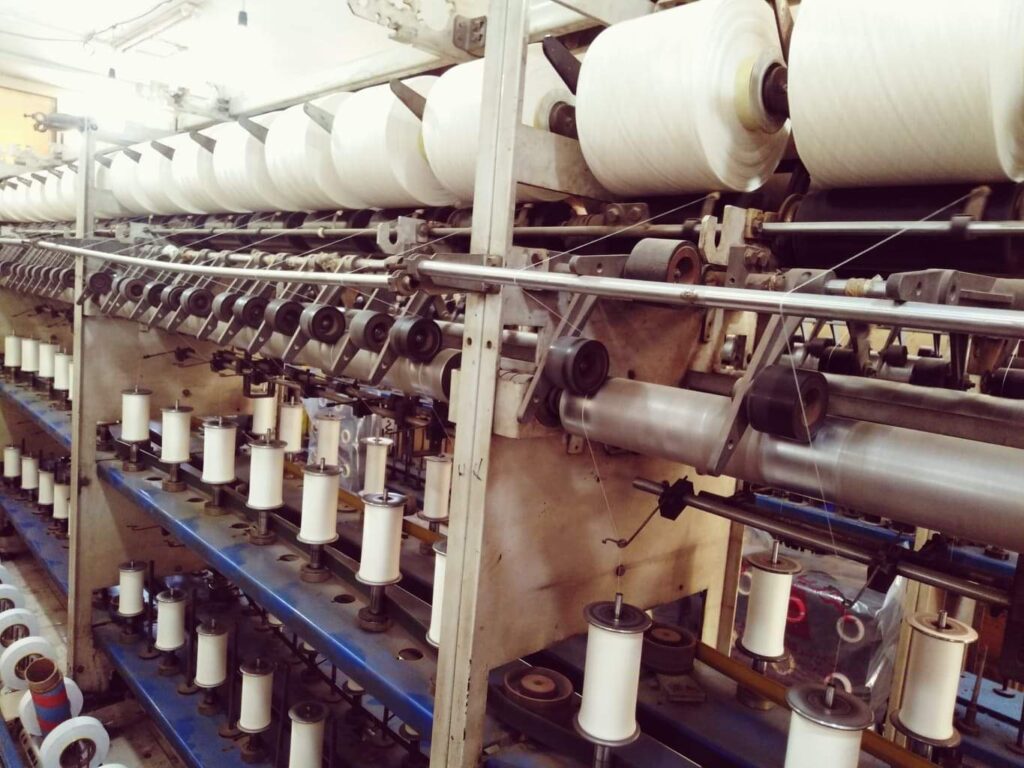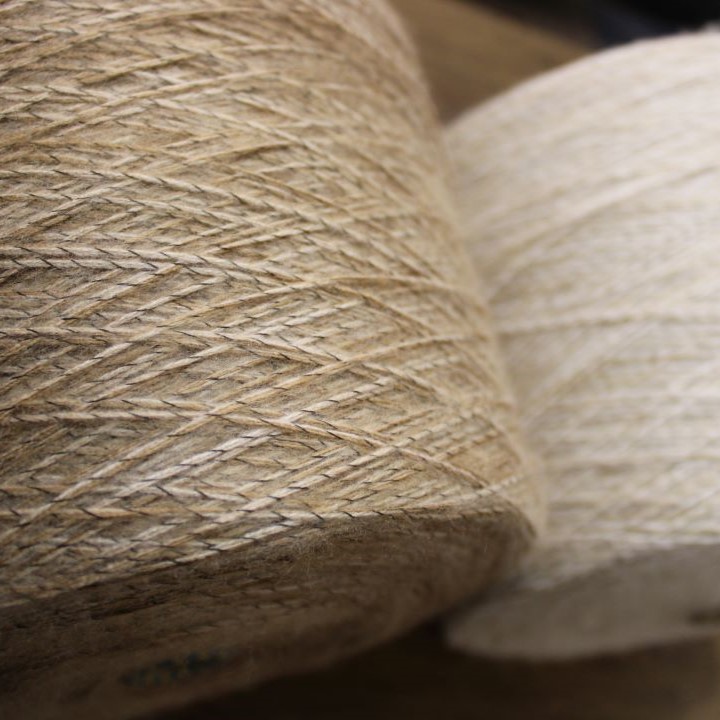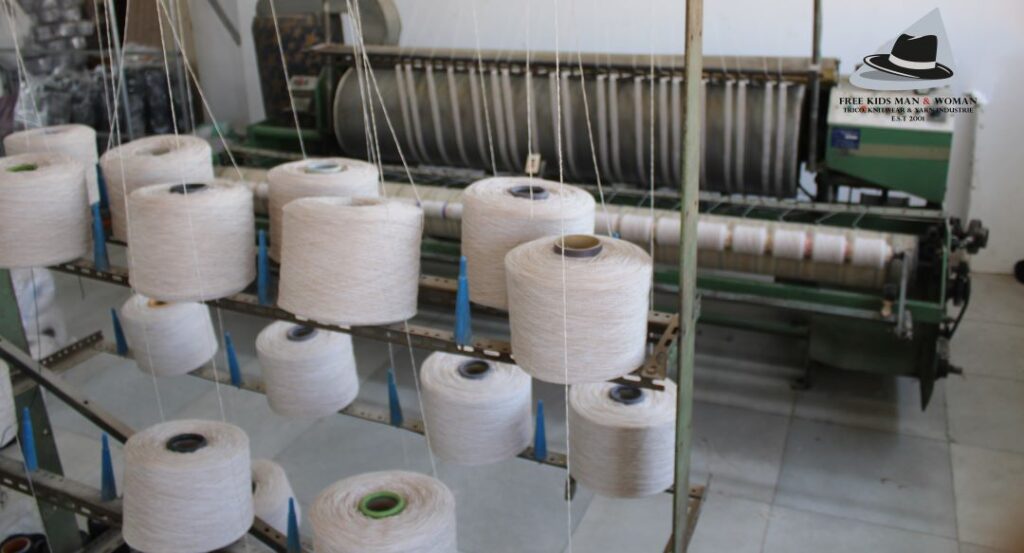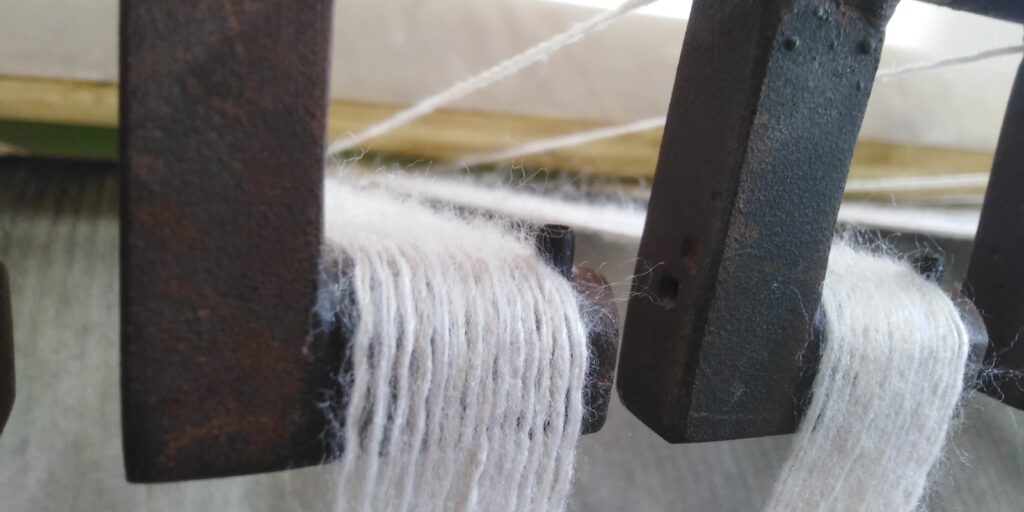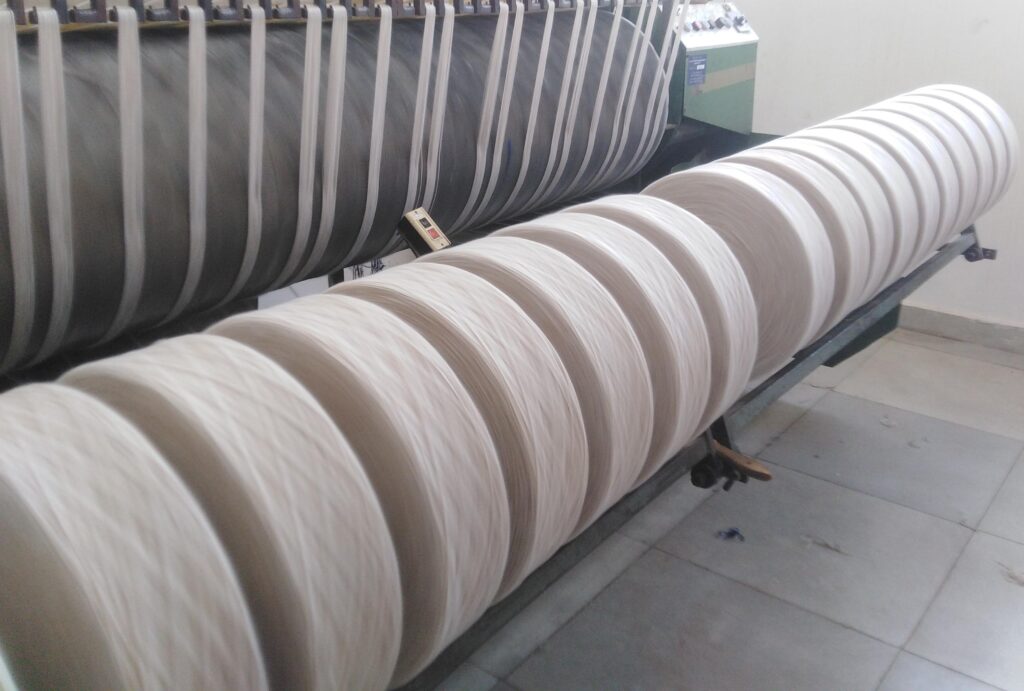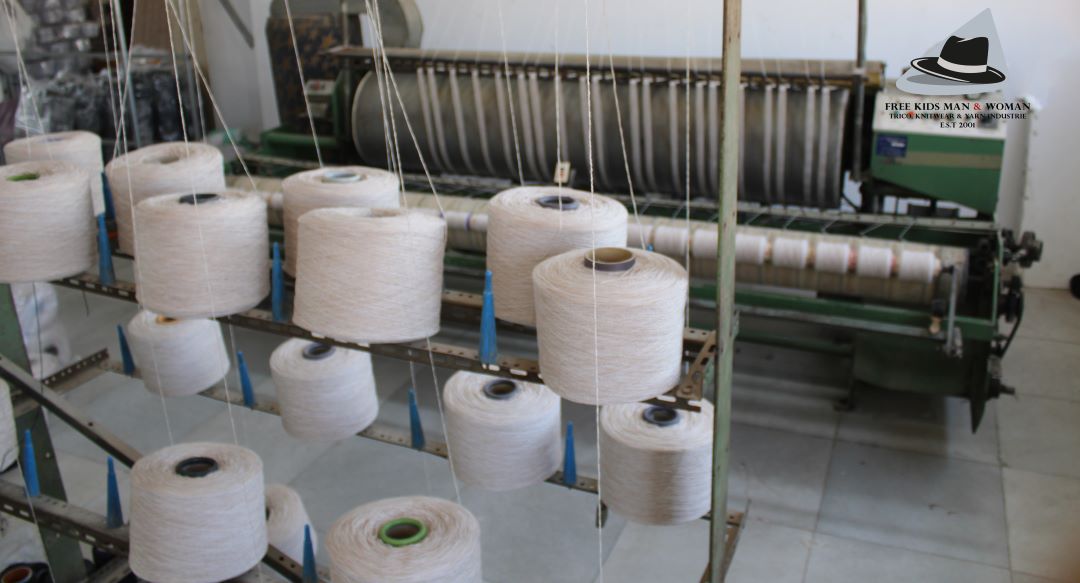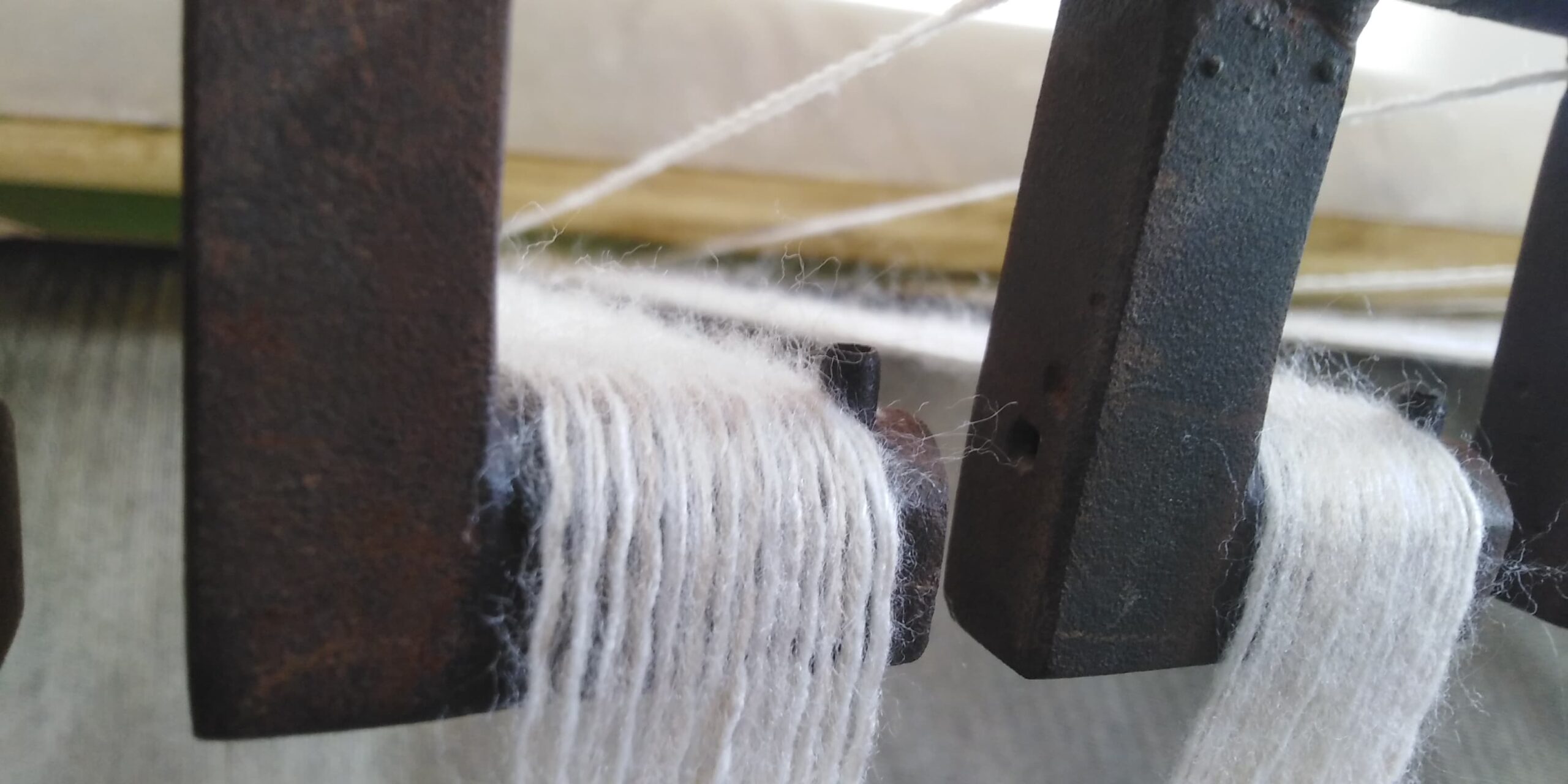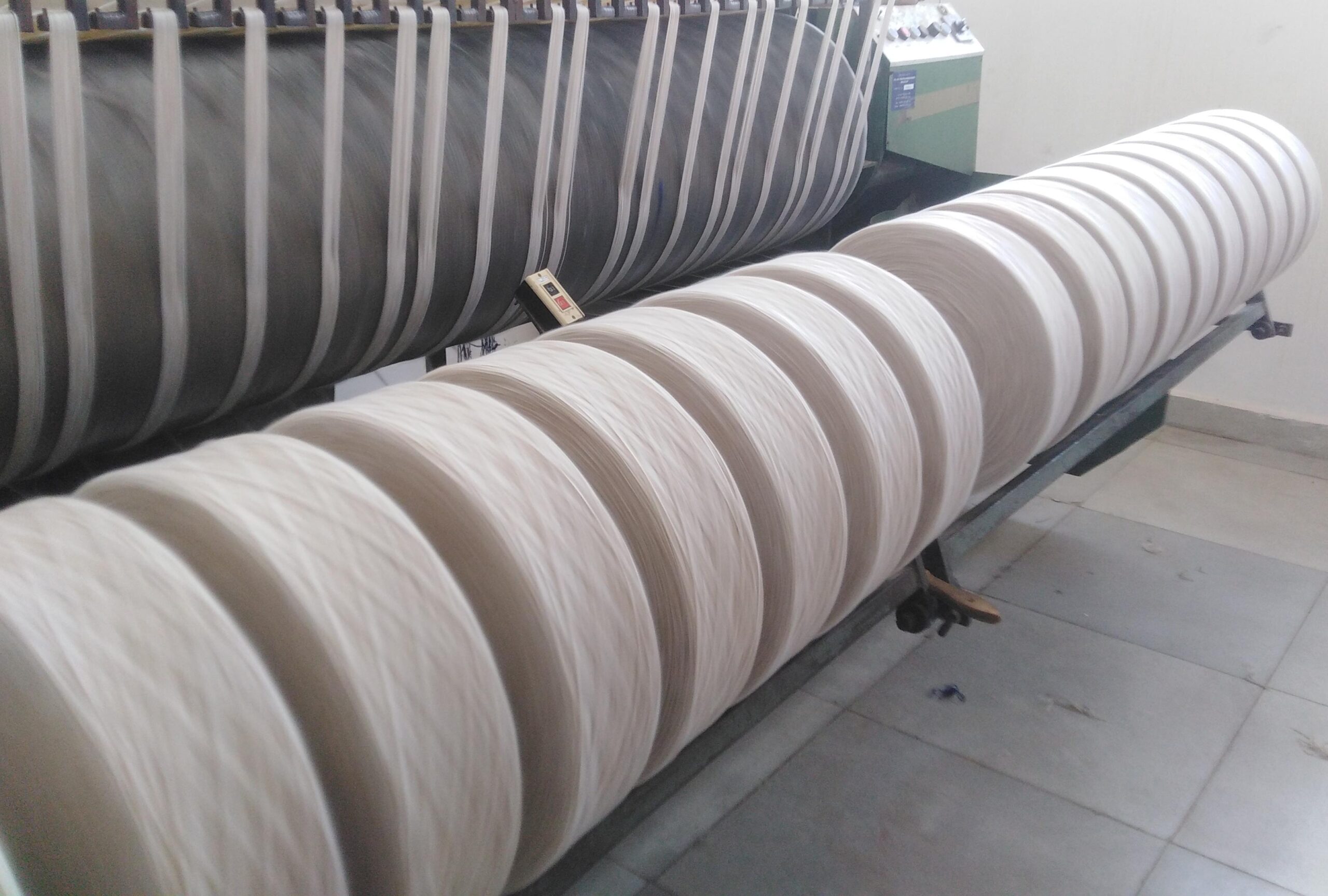Spinning Factory
The twisted yarn manufacturing process at our factory is one of the fundamental operations contributing to the production of high-quality garments. The process involves several precise stages designed to ensure that the highest quality standards are met.
The Twisted Yarn Manufacturing Process at Our Factory
- Raw Material Selection:
The process begins with selecting superior fibers, whether natural (such as cotton and wool) or synthetic (such as polyester and nylon). Each type of fiber is carefully evaluated to ensure it meets the technical specifications required for the final product. - Blending:
In this stage, the fibers are prepared in specific proportions to achieve the desired characteristics for the twisted yarn, such as strength, flexibility, and texture. Advanced techniques are used to ensure the proper balance of components, maximizing the benefits of each fiber type. - Spinning:
The blended fibers are wound onto spools using specialized machinery. This spinning process helps to form multi-layered yarns, enhancing their durability and providing suitable flexibility. The machinery used relies on modern technologies to ensure a precise and flawless spinning process. - Twisting:
Sophisticated equipment is employed to twist the yarns, where the fibers are rotated around each other in a particular manner, increasing their strength and reducing the likelihood of breakage. This step is crucial for improving the cohesion and uniformity between the various fibers and achieving the desired colors. - Inspection and Quality Control:
The twisted yarns undergo rigorous testing to ensure their quality. Thickness, strength, and softness are assessed using advanced inspection devices. This stage guarantees that the produced yarns meet the high standards required in the garment industry. - Packaging:
After the manufacturing process is completed, the twisted yarns are professionally packaged. Sturdy and suitable packaging materials are used to preserve the quality of the yarns during storage and transportation. Clear labels are placed on each package for easy identification and to ensure proper organization in the subsequent stages of production.
These interconnected processes work together meticulously to produce high-quality twisted yarns, enhancing the durability and strength of the final products we offer in our factory. We are committed to continuous innovation and development to ensure excellence in knitwear manufacturing and competitiveness in the market.
Zoe Yarn Factory Products
Zoi Factory Products: Yarns
Fuzzing or Twisting Process at Zoi Yarn Factory
The fuzzing or twisting process at our factory is an essential step to improve the physical properties of the twisted yarns. It increases the yarn's volume and density using specialized machines, making the yarns more durable and suitable for various applications in the garment industry.
- Preparation:
The process begins with gathering the required yarns and carefully inspecting them to ensure they are ready for the fuzzing or twisting process. - Fuzzing Process:
Specialized machines are used to pass the yarns through a series of rollers and brushes. These machines increase the yarn’s volume and density, distributing the fibers uniformly and making the yarn thicker and stronger, while preserving its soft texture. - Controlling Density and Volume:
The machines are precisely adjusted to achieve the perfect balance between increasing the yarn’s volume and density. This stage allows us to modify the yarn’s properties according to the required specifications of the final product. - Quality Inspection:
After the fuzzing process, the yarns undergo a series of tests to ensure they meet technical specifications. This includes verifying the increase in volume and density, as well as checking the yarn's flexibility and thickness. - Packaging:
The twisted yarns are carefully packaged after passing the inspection stage, using durable packaging materials that preserve their quality during transportation and storage.
This process contributes to enhancing the quality of the yarns by increasing their volume and density, making them suitable for a wide range of applications in the garment industry.

